Lifespan and Durability of Lexus Hybrid Batteries
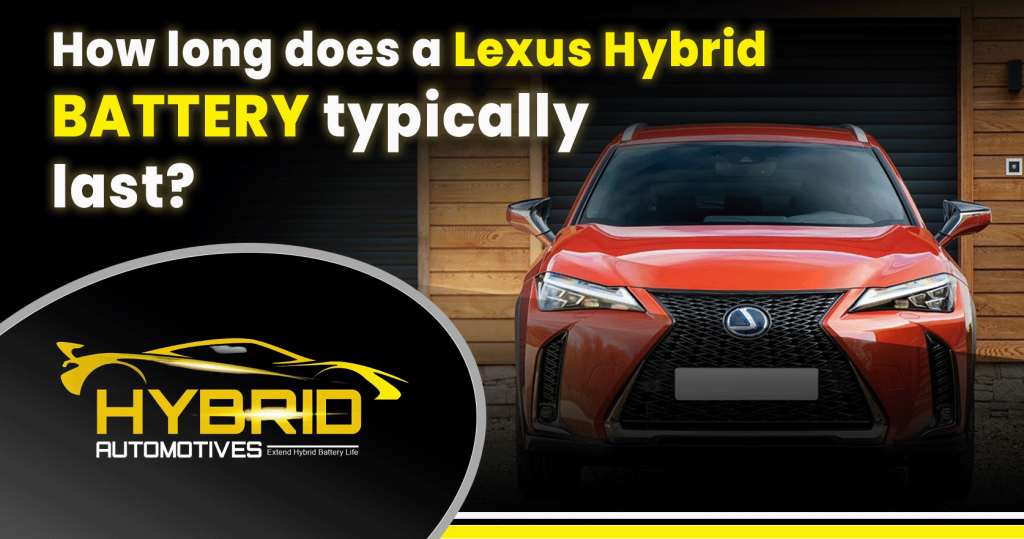
Hybrid vehicles, like those made by Lexus, are popular because they save fuel and are better for the environment. A key part of these cars is the hybrid battery. We will explore the typical lifespan of a Lexus hybrid battery, factors that affect its longevity, the potential for the battery to last over a decade, tips on extending its life, and details about warranty coverage. How long does a Lexus hybrid battery typically last? A Lexus hybrid battery usually lasts between 8 to 15 years or about 100,000 to 150,000 miles. The lifespan depends on factors like driving habits, climate, and maintenance. Driving Habits: Frequent short trips or stop-and-go driving can strain the battery, potentially shortening its lifespan. In contrast, long highway drives are generally easier on hybrid batteries. Climate: Extreme temperatures, whether hot or cold, can impact the performance and longevity of a hybrid battery. In very hot climates, the battery may degrade faster due to heat stress. Conversely, cold climates can reduce the battery’s efficiency, though the impact on overall lifespan is less severe compared to heat. Maintenance: Regular maintenance and check-ups can help prolong the life of a hybrid battery. Ensuring that the cooling system for the battery is working correctly and keeping the battery clean can prevent premature wear and tear. What are the signs that my Lexus hybrid battery needs to be replaced? Signs that your Lexus hybrid battery needs to be replaced include: Decreased Fuel Efficiency: If you notice a significant drop in your vehicle’s fuel efficiency, it could mean the hybrid battery is not working well. Warning Lights: If the dashboard shows warning lights related to the hybrid system or battery, it’s a clear sign there might be an issue. Strange Engine Noises: Unusual sounds from the engine when the vehicle switches between the electric motor and gasoline engine could indicate a problem with the hybrid battery. Reduced Electric-Only Range: If your car’s electric-only range decreases noticeably, it may mean the battery is losing its ability to hold a charge. Frequent Switching to Gasoline Engine: If the gasoline engine engages more frequently than usual, it could be a sign that the hybrid battery is not providing sufficient power. Battery Overheating: If the battery becomes unusually hot or you notice the cooling system working harder than normal, it could indicate battery issues. Sluggish Performance: A decrease in overall vehicle performance, like slower acceleration, can be a sign of a failing hybrid battery. Unusual Charging Behavior: If the battery takes longer to charge or depletes quickly, it might need to be replaced. If you experience any of these signs, it’s important to have your vehicle inspected by a qualified Lexus technician to determine if the hybrid battery needs to be replaced. How to extend the life of a Lexus hybrid battery? To extend the life of a Lexus hybrid battery, follow these tips: Regular Maintenance: Schedule regular check-ups to ensure the battery and its cooling system are functioning properly. Clean the battery and its components as needed. Moderate Driving Habits: Avoid frequent short trips and excessive stop-and-go driving. Long, steady drives are less stressful on the battery. Optimal Climate: Park in shaded or climate-controlled areas to protect the battery from extreme temperatures. Avoid leaving the car in very hot or very cold conditions for long periods. Proper Usage: Avoid heavy loads, such as towing or driving in hilly areas, as these can put extra strain on the battery. Charging Practices: Follow proper charging practices. Avoid deep discharges and overcharging to maintain battery health. Use Genuine Parts: When replacement or repair is needed, use OEM (Original Equipment Manufacturer) parts to ensure compatibility and quality. Battery Cooling System: Ensure the battery cooling system is working correctly. A well-maintained cooling system prevents the battery from overheating. Drive Regularly: Regular use of the vehicle keeps the battery active and prevents it from deteriorating due to disuse. Is there a warranty on Lexus hybrid batteries? Yes, there is a warranty on Lexus hybrid batteries. The standard warranty usually covers the hybrid battery for 8 years or 100,000 miles, whichever comes first. In some regions, Lexus may offer an extended warranty that covers the battery for up to 10 years or 150,000 miles. This warranty covers defects in materials and workmanship, giving you peace of mind about the battery’s reliability during the warranty period. Always check with your local Lexus dealer for the specific warranty details applicable to your vehicle and region.
Everything You Need to Know About Toyota Camry Hybrid Batteries
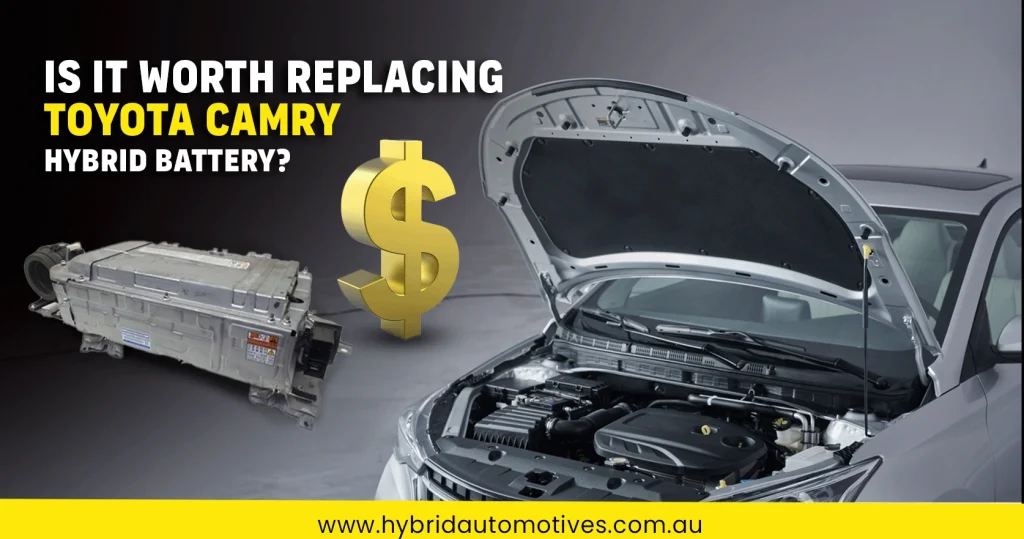
Is It Worth Replacing a Toyota Camry Hybrid Battery? Yes, Replacing a Toyota Camry hybrid battery can be a wise investment. A new battery can extend the life of your vehicle, restore fuel efficiency, and improve overall performance. While the cost may be significant, it is often more economical than purchasing a new car. Additionally, replacing the battery can enhance the car’s resale value. Here’s a breakdown of considerations to help you decide: Condition of the Vehicle Overall Condition: If your Camry is in excellent condition with no major issues, replacing the battery can keep it running efficiently for many more years. Maintenance History: A well-maintained car is more likely to benefit from a new battery than one with a history of neglect or other mechanical problems. Usage and Future Plans Long-Term Ownership: If you plan to keep the car for several more years, a new battery can be a good investment, providing reliability and better fuel efficiency. Resale Value: A new hybrid battery can enhance the resale value, making the car more attractive to potential buyers if you decide to sell it. How Much Is a Toyota Camry Hybrid Battery? The cost of a new Toyota Camry hybrid battery can range from $2,000 to $5,000, depending on the model year and the dealership or service center. Prices may vary, so it’s advisable to shop around for the best deal. Here’s a more detailed breakdown: Factors Influencing the Cost 1. Model Year: Older Models: Batteries for older Camry Hybrid models might be less expensive, as they may use older technology. However, availability can sometimes be an issue, which might affect price. Newer Models: Newer Camry Hybrids often have more advanced battery technology, which can be more costly. These batteries might offer better performance and longer life but come at a higher price. 2. Type of Battery: New Batteries: Purchasing a brand-new hybrid battery from a Toyota dealership typically falls within the $2,000 to $5,000 range. New batteries come with the latest technology and a full warranty. Refurbished Batteries: A refurbished or reconditioned battery can be a more economical option, often costing between $1,500 and $2,500. These batteries have been repaired and tested to ensure they meet performance standards but may come with a shorter warranty period. 3. Dealership or Service Center: Authorized Dealerships: Getting a battery from an authorized Toyota dealership can ensure quality and compatibility but may come at a higher price due to dealership overheads. Independent Service Centers: Independent or specialist hybrid service centers might offer competitive pricing and discounts. However, it’s essential to verify their credentials and warranty terms. 4. Labor Costs: Installation: The cost of labor for installing a new hybrid battery can vary, typically ranging from $500 to $1,000. The cost of installation can vary depending on the complexity of the process and the hourly rates charged by the service center. Additional Services: Some service centers might include additional services, such as diagnostic checks or software updates, as part of the installation package. How Long Does the Battery Last on a Toyota Camry Hybrid? A Toyota Camry hybrid battery typically lasts 8 to 10 years or approximately 100,000 to 150,000 miles. This lifespan can vary based on driving conditions, maintenance, and climate. Factors Influencing Battery Life: 1. Driving Conditions: City vs. Highway Driving: Frequent stop-and-go city driving can cause the battery to cycle more often, potentially leading to a shorter lifespan compared to highway driving. Driving Habits: Aggressive driving, including rapid acceleration and heavy braking, can put more strain on the battery compared to smooth, consistent driving. 2. Maintenance: Regular Check-Ups: Keeping up with regular maintenance, including hybrid system checks, can help identify and address issues early, potentially extending battery life. Software Updates: Ensuring that the car’s software is up-to-date can optimize battery performance and longevity. 3. Climate: Temperature Extremes: Extreme temperatures, both hot and cold, can impact battery health. Consistent exposure to very high or very low temperatures can degrade the battery more quickly. Humidity: High humidity can also affect battery components, leading to potential issues over time. Can You Drive a Camry Hybrid Without a Battery? No, you cannot drive a Camry hybrid without a functional hybrid battery. The battery is essential for the hybrid system to operate, as it powers the electric motor and assists the gasoline engine. Without it, the vehicle will not operate correctly. How Do I Know If My Camry Hybrid Battery Is Bad? Knowing if your Toyota Camry Hybrid battery is failing is crucial for maintaining the performance and efficiency of your vehicle. Here are detailed signs that your hybrid battery might be going bad, along with some factual data: 1. Reduced Fuel Economy: Symptom: One of the first and most noticeable signs of a failing hybrid battery is a drop in fuel efficiency. You might find yourself needing to refuel more often. Data: The hybrid system relies on the battery to assist the gasoline engine, especially during low-speed driving. A weak battery can’t provide sufficient support, causing the gasoline engine to work harder and consume more fuel. 2. Unusual Engine Noises: Symptom: You might hear strange noises coming from the engine or the area where the battery is located. This could be due to the gasoline engine running more frequently to compensate for the battery’s reduced performance. Data: The hybrid system is designed to run smoothly and quietly. Any deviation from this, like increased engine noise, can indicate that the hybrid battery is not functioning correctly. 3. Hybrid System Warning Light: Symptom: The hybrid system warning light or the “Check Hybrid System” message on the dashboard is a clear indicator that there is an issue with the hybrid battery. Data: The onboard diagnostics system constantly monitors the performance of the hybrid components. If it detects a problem, it triggers the warning light to alert the driver. 4. Decreased Battery Charge Retention: Symptom: You might notice that the battery charge level drops faster than usual or that it doesn’t hold a charge as long as it used to.
Driving a Prius with a Bad Hybrid Battery: What to Consider
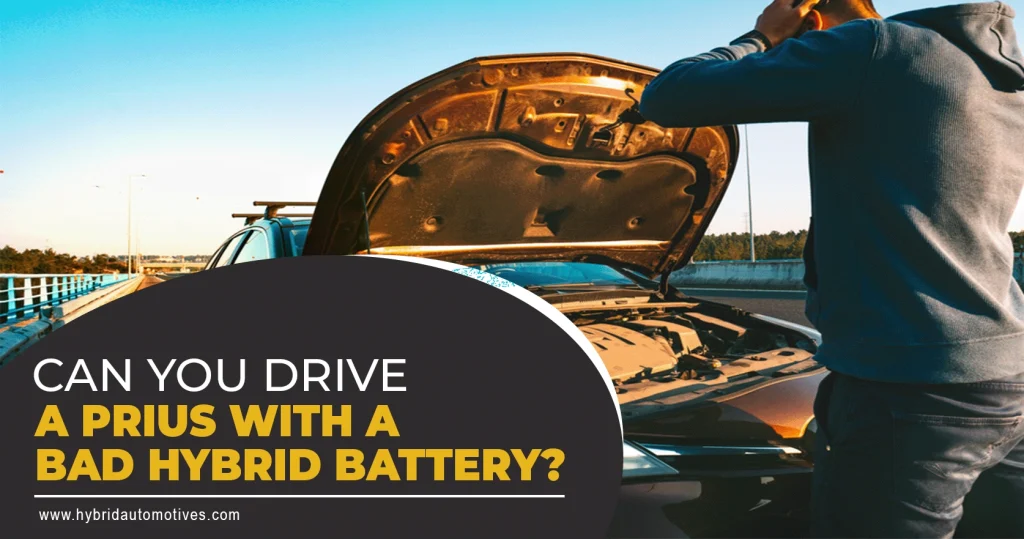
Can you drive a Prius with a bad hybrid battery? No, driving a Prius with a bad hybrid battery is not recommended due to potential performance issues, decreased efficiency, and the risk of further damage to the hybrid system. It’s best to have the battery inspected and repaired promptly by a qualified mechanic or dealership to ensure safe operation. Why it’s not recommended: Reduced safety: A compromised battery can limit power when you need it most, like merging onto highways. Further damage: Running on a failing battery can stress other parts of the hybrid system, leading to costlier repairs. Undiagnosed problems: The warning light for a bad battery might indicate other underlying issues in the hybrid system. In short, while driving with a bad battery might be possible in short bursts, it’s best to address the issue for safety and optimal vehicle performance. What will happen if I drive my Prius with a bad hybrid battery? If you drive your Prius with a bad hybrid battery, you may experience several consequences: Decreased Fuel Efficiency: Studies have shown that a malfunctioning hybrid battery can lead to up to a 20% decrease in fuel efficiency compared to a properly functioning hybrid system. The electric motor in a Prius is designed to assist the gasoline engine during low-speed driving and acceleration, optimizing fuel consumption. When the hybrid battery is not functioning correctly, the vehicle relies more heavily on the gasoline engine alone, resulting in higher fuel consumption. Reduced Performance: Tests conducted by automotive experts have demonstrated that a faulty hybrid battery can lead to a noticeable decrease in acceleration times and overall performance metrics. The hybrid system in a Prius is engineered to seamlessly blend power from the electric motor and gasoline engine. When the hybrid battery is not functioning properly, the vehicle may struggle to achieve the same level of performance, leading to slower acceleration and diminished power output. Increased Emissions: Research has indicated that a malfunctioning hybrid battery can cause the gasoline engine to operate inefficiently, resulting in higher emissions of harmful pollutants such as carbon dioxide (CO2) and nitrogen oxides (NOx). The Prius is renowned for its low emissions thanks to its hybrid technology. However, when the hybrid battery is compromised, the gasoline engine may run more frequently and at suboptimal conditions, leading to increased emissions. Potential Damage to Other Components: Mechanics and technicians have reported instances where driving with a bad hybrid battery has resulted in damage to other components of the hybrid system, such as the inverter or electric motor. The hybrid system in a Prius relies on precise coordination between various components. When the hybrid battery is malfunctioning, other components may be subjected to additional stress or operate outside of their intended parameters, increasing the risk of damage over time. Eventually, Complete Failure: Data from automotive service centers show that neglecting a bad hybrid battery can lead to a complete failure of the hybrid system, requiring extensive repairs or replacement. The battery in a Prius hybrid car usually lasts around 8 to 10 years before it needs to be replaced. Ignoring signs of a failing battery, such as decreased performance or warning lights, can lead to further deterioration and eventual system failure, leaving the vehicle inoperable until repairs are made. How to start a hybrid car with a dead battery? Jumping a hybrid car with a dead 12v battery is similar to jumping a regular car. Here’s what you’ll need: Jumper cables Another car with a good 12v battery (Important: The donor car’s battery voltage should be similar to yours) Steps: Park both cars close together, ensuring they don’t touch. Turn off all electronics and ignition systems in both cars. Open the hoods of both vehicles. Locate the 12v batteries in each car. The Prius battery is usually under the hood in a compartment. If you’re unsure where it is, check your car’s manual for the exact spot. Identify the positive (+) and negative (-) terminals on each battery. Look for symbols with a plus or minus, and usually, the positive one is red. Connect the jumper cables in the following order: Clamp one RED cable to the POSITIVE (+) terminal of the good battery. Clamp the other end of the RED cable to the POSITIVE (+) terminal of the dead Prius battery. Attach the BLACK cable to the NEGATIVE (-) side of the good battery. Clamp the other end of the BLACK cable to a bare metal grounding point on the Prius frame, away from the battery and any moving parts. Important: Don’t connect it to the negative terminal of the dead battery! Turn on the car with a good battery and let it run for a few minutes. Attempt to start your Prius. If it starts up without issues, let it run for some time to recharge the internal 12v battery. Disconnect the jumper cables in the reverse order of connection (black cable from Prius first, then black from the good car, red from Prius, then red from the good car). Important safety precautions: Do not let the jumper cables touch each other while connected. This can cause sparks and damage the vehicles’ electrical systems. Ensure proper connection of all cable clamps. A loose connection can hinder the jump-start process. Never attach the negative cable to the negative terminal of the dead battery. This can harm the hybrid battery system. If your Prius doesn’t start after these steps, there might be an issue with the hybrid battery itself, and it’s recommended to consult a professional mechanic. How to Check Prius Battery Life Checking the life of a Prius battery involves several methods: Check Dashboard Indicators: Prius models typically have dashboard indicators that provide information about the hybrid battery’s health. Look for warning lights or messages related to the hybrid system. If the battery is close to wearing out, there might be warnings about reduced performance or battery decline. Diagnostic Scan Tools: Automotive diagnostic scan tools can be used to assess the health of the
Check Hybrid System Toyota Camry 2010
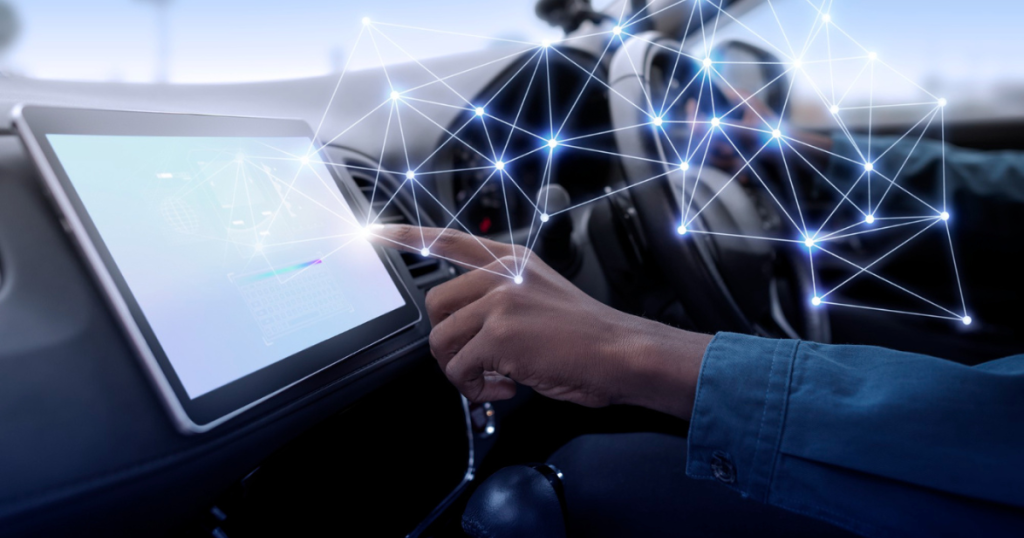
The Toyota Camry 2010 is renowned for its reliable performance and fuel efficiency, owing to its hybrid technology. However, like any complex system, the hybrid system in the Camry 2010 may encounter issues over time. One such issue is the dreaded “Check Hybrid System” warning, which can be concerning for drivers. We’ll delve into what this warning means, the common causes behind it, diagnostic steps, possible solutions, and preventive maintenance tips to keep your Camry 2010 running smoothly. Understanding the Check Hybrid System Warning: The “Check Hybrid System” warning is an indication from your Camry 2010’s onboard diagnostics system that there’s a problem with the hybrid system. It could signify various issues, ranging from minor sensor malfunctions to more serious battery or component failures. Not paying attention to this warning could make things worse and might make your car not work as well or be as safe. Common Issues with Camry 2010 Hybrid System: Several factors can trigger the “Check Hybrid System” warning in your Camry 2010: Battery Degradation: Over time, the hybrid battery in your Camry 2010 may degrade, leading to decreased performance and triggering the warning. System Malfunctions: Faulty components or wiring within the hybrid system can cause the warning to appear. Sensor Issues: Malfunctioning sensors responsible for monitoring various aspects of the hybrid system can also trigger false warnings. Diagnostic Steps: If you encounter the “Check Hybrid System” warning in your Camry 2010, follow these diagnostic steps: Scan for Diagnostic Codes: Use a special scanner to see the codes stored in your car’s computer. Interpret Diagnostic Codes: Refer to the vehicle’s service manual or seek assistance from a professional to interpret the codes accurately. Visual Inspection: Conduct a visual inspection of the hybrid system components, checking for any visible signs of damage or wear. Functional Tests: Perform functional tests on relevant components to identify any operational issues. Possible Solutions: Once you’ve identified the root cause of the “Check Hybrid System” warning, consider the following solutions: Battery Replacement or Reconditioning: If the “Check Hybrid System” warning is triggered by battery degradation, consider replacing the hybrid battery with a new one or exploring reconditioning options. Reconditioning involves restoring the battery’s performance through techniques like balancing the cells or replacing individual modules, which can be a cost-effective alternative to a full replacement. Component Repair or Replacement: Address any identified faulty components within the hybrid system. This may involve repairing damaged wiring, replacing malfunctioning sensors, or fixing issues with the inverter, motor, or other essential components. Consult with a qualified technician or mechanic experienced in hybrid systems to ensure accurate diagnosis and effective repairs. Diagnostic Software Updates: In some cases, updating the vehicle’s diagnostic software may resolve compatibility issues or bugs causing the “Check Hybrid System” warning. Manufacturers like Toyota periodically release software updates to improve system functionality and address known issues. Visit an authorized dealership or service center to inquire about available updates for your Camry 2010. System Reset: Performing a system reset can sometimes clear false warning messages and restore normal operation. This process typically involves disconnecting the vehicle’s battery for a few minutes to reset the onboard computer systems. However, proceed with caution and consult the vehicle’s manual or seek professional guidance to ensure proper procedure and avoid unintended consequences. Preventive Maintenance Tips: To minimize the risk of encountering the “Check Hybrid System” warning in your Camry 2010, follow these preventive maintenance tips: Routine Hybrid System Inspections: Incorporate regular hybrid system inspections into your maintenance schedule. During these checks, experts can look carefully at important parts, find possible issues early, and suggest fixing or changing things before they become big problems. Battery Health Monitoring: Utilize diagnostic tools or seek professional assistance to monitor the health of your Camry 2010’s hybrid battery regularly. Battery health checks can provide valuable insights into the battery’s condition, including capacity, voltage levels, and overall performance. Addressing any signs of degradation promptly can help prevent unexpected failures and prolong the battery’s lifespan. Fluid Checks and Replenishment: Ensure proper maintenance of essential fluids, such as coolant and transmission fluid, that play a crucial role in the hybrid system’s operation. Check the levels and quality of fluids often, and add more or change them if necessary to keep everything working well and avoid problems with the parts of the system. Eco-Friendly Driving Habits: Drive in a way that’s kind to the environment to ease pressure on the hybrid system and save fuel. Avoid speeding up and slowing down too fast, try to keep a steady speed, and use braking that captures energy when you slow down. These practices not only promote fuel savings but also contribute to the overall health and longevity of the hybrid system. Professional Maintenance Services: Entrust hybrid system maintenance and repairs to qualified technicians or mechanics with expertise in hybrid technology. Authorized dealerships or certified service centers equipped with specialized tools and diagnostic equipment can provide comprehensive servicing tailored to your Camry 2010’s hybrid system needs, ensuring peace of mind and optimal performance for years to come. FAQs (Frequently Ask Questions) Q1. Is it safe to continue driving if the “Check Hybrid System” warning appears in my Camry 2010? It’s not a good idea to keep driving if the “Check Hybrid System” light is on. Continuing to drive the vehicle with this warning could potentially lead to further damage to the hybrid system and compromise safety. Q2. Is it safe to continue driving if the “Check Hybrid System” warning appears in my Camry 2010? No, it’s not advisable to continue driving with the “Check Hybrid System” warning illuminated. Doing so could worsen any underlying issues and jeopardize both the vehicle’s performance and safety. Q3. How expensive is it to get a new hybrid battery for a 2010 Camry? The cost of replacing the hybrid battery in a Camry 2010 can vary depending on factors such as the brand of the battery, whether it’s a new or reconditioned unit and labor charges. Q4. Can I reset the “Check Hybrid System” warning myself?
Navigate Your 2007 Toyota Camry Check Hybrid System
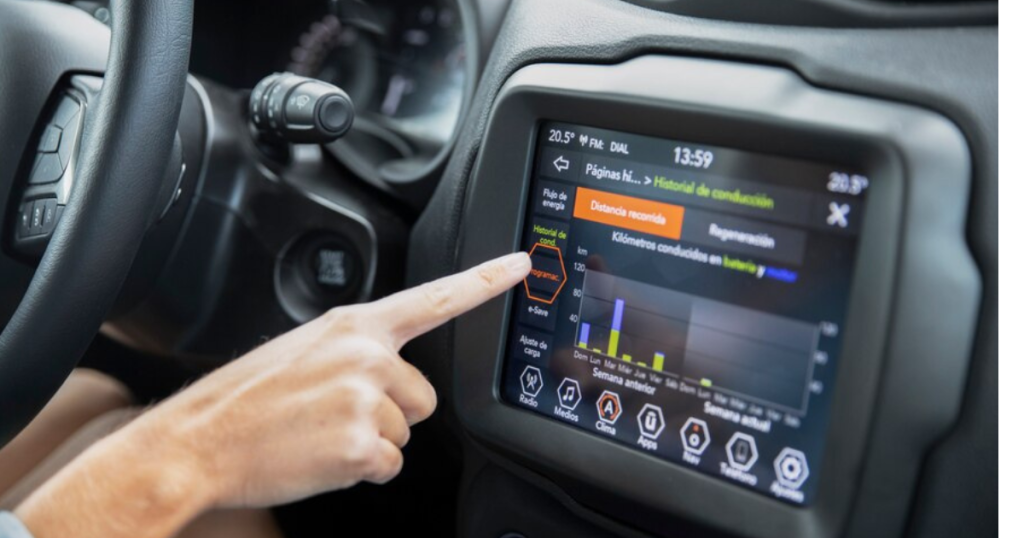
The 2007 Toyota Camry Hybrid marked a significant milestone in the evolution of hybrid vehicles, blending the renowned reliability of the Camry with cutting-edge hybrid technology. This model showed Toyota’s dedication to being eco-friendly and creative. It gave drivers a car that uses less fuel and is better for the environment compared to regular gas-powered cars. Understanding the “Check Hybrid System” Warning: The “Check Hybrid System” warning serves as a crucial indicator of potential issues within the advanced hybrid system of the 2007 Toyota Camry Hybrid. This warning message alerts drivers to underlying problems that require prompt attention to ensure the continued reliability and performance of the vehicle. Common Symptoms Associated with the Warning: When the “Check Hybrid System” warning appears in a 2007 Toyota Camry Hybrid, several common symptoms may accompany it: Dashboard Indicators: Specific dashboard lights, such as the battery symbol or an exclamation mark within a triangle, may illuminate. Performance Changes: Drivers may notice reduced fuel efficiency or power output, affecting the overall driving experience. Unusual Sounds or Sensations: Odd noises like whining or grinding, or unusual vibrations, may occur while driving. Inconsistent Power Delivery: Drivers may experience irregular power delivery, such as sudden surges or delays in acceleration. Reduced Hybrid Mode Operation: The vehicle may struggle to switch between hybrid and gasoline modes efficiently, impacting overall fuel economy. Increased Engine Noise: Drivers may notice louder engine noises or unusual engine vibrations, signaling potential issues with hybrid system components. Diagnostic Trouble Codes (DTCs) Associated with Toyota Camry Hybrid “Check Hybrid System” Warning When diagnosing issues with the Toyota Camry Hybrid’s hybrid system, various Diagnostic Trouble Codes (DTCs) may appear, providing insights into potential faults. Here are some common DTCs associated with the “Check Hybrid System” warning and their corresponding details: P0A80 – Indicates hybrid battery deterioration. P0A82 – Indicates hybrid battery deterioration. P0A7D – Indicates hybrid powertrain control module malfunction. P0A94 – Indicates inverter cooling system performance issue. P0A9B – Indicates inverter component failure. P0A7F – Indicates hybrid system performance issue. P0A93 – Indicates inverter circuit malfunction. P0A92 – Indicates hybrid system performance issue. P0A95 – Indicates inverter cooling system performance issue. P0A96 – Indicates inverter cooling system performance issue. Diagnostic Steps for Resolving the Issue: To address the “Check Hybrid System” warning, drivers can follow these diagnostic steps: Initial Checks: Perform visual inspections to identify visible damage or abnormalities in the hybrid system components. Professional Assistance: Seek help from a certified Toyota technician or dealership for thorough diagnosis and repair. Onboard Diagnostics Scan: Use a tool called an OBD-II scanner to find out what’s wrong with your car by checking for codes stored in its computer system. Component Testing: Perform tests on specific hybrid system components, such as the battery, inverter, and motor, to identify faulty parts. Functional Tests: Conduct functional tests to assess the overall performance of the hybrid system, including powertrain and drivetrain operations. Possible Causes of the Warning: Several factors may trigger the “Check Hybrid System” warning in a 2007 Toyota Camry Hybrid: Battery Issues: Battery degradation or malfunction can disrupt the hybrid system’s operation. Electrical System Malfunctions: Inverter or electrical system issues, including overheating or component failure, may prompt the warning. Sensor Failures: Malfunctioning sensors or other component issues within the hybrid system can also contribute to the warning message. Software Glitches: Software bugs or compatibility issues within the vehicle’s onboard computer system may trigger false “Check Hybrid System” warnings. Environmental Factors: Very hot or very cold weather, or getting wet, can make the parts of the hybrid system not work well, which might cause warning lights to come on. Wear and Tear: Normal wear and tear over time can cause degradation of hybrid system components, resulting in warning messages as they approach the end of their lifespan. Steps to Take After Seeing the Warning: In response to the “Check Hybrid System” warning, drivers should prioritize safety by taking precautionary measures before driving. This may include performing visual inspections of the vehicle and ensuring that all essential systems are functioning properly. Additionally, contacting a certified Toyota technician or dealership for professional diagnosis and repair is essential to address the underlying issue effectively. Maintenance and Preventative Measures: Regular maintenance is paramount for preserving the performance and longevity of the hybrid system in the 2007 Toyota Camry Hybrid. Regular check-ups, looking at the battery, and updating the software can help find and fix problems early before they get worse. By adopting proactive maintenance practices and adhering to manufacturer recommendations, drivers can prolong the life of their hybrid system and minimize the risk of encountering the “Check Hybrid System” warning.
Troubleshooting Check Hybrid System in Toyota Camry
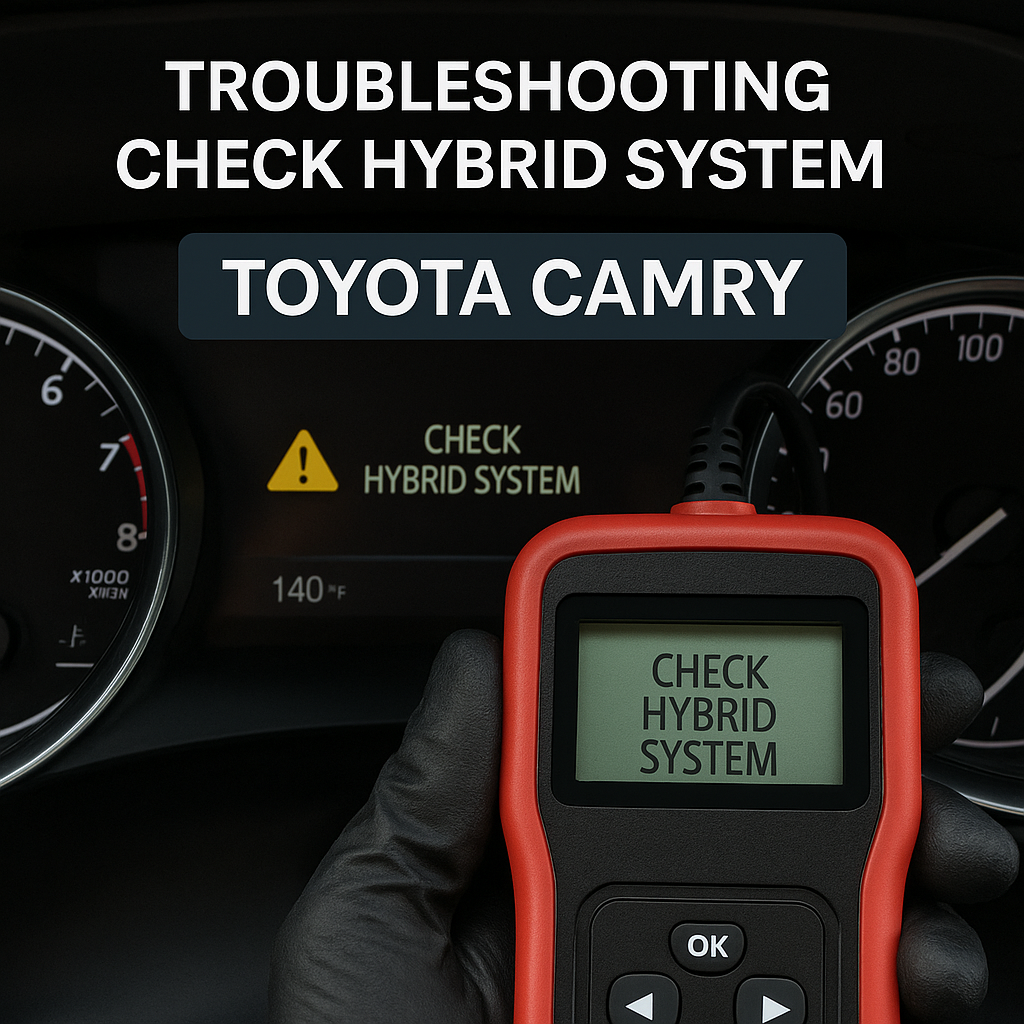
The Toyota Camry Hybrid is a standout example of eco-friendly cars. It takes the trustworthiness of the Camry and adds hybrid technology, giving you a car that’s both reliable and fuel-efficient. However, like any sophisticated machine, it may occasionally encounter issues, one of which is the dreaded “Check Hybrid System” warning. Common Causes of the Warning: The “Check Hybrid System” warning in the Toyota Camry Hybrid serves as a crucial indicator of potential issues within its advanced propulsion system. Understanding the common causes behind this warning is essential for maintaining the vehicle’s reliability and performance. Battery Issues: The hybrid battery pack is a crucial component of the Toyota Camry Hybrid’s propulsion system. Over time, the battery cells can degrade due to factors such as age, temperature extremes, and usage patterns. Excessive cycling or deep discharges can accelerate battery deterioration, leading to reduced capacity and performance. Physical damage to the battery pack, such as corrosion or leaks, can also trigger the warning. Inverter Problems: The inverter changes the power from the battery into a type that runs the electric motor. Any malfunction in the inverter can disrupt this process and lead to the “Check Hybrid System” warning. Overheating due to poor cooling or electrical faults can cause damage to the inverter components, resulting in performance issues and potential warning indicators. Electrical faults such as short circuits or component failure within the inverter assembly can also prompt the warning. Sensor Malfunctions: Various sensors throughout the hybrid system monitor critical parameters such as battery voltage, temperature, and motor speed. Malfunctioning sensors can provide erroneous data, triggering the warning unnecessarily. Sensor wiring harnesses can suffer from wear and tear over time, leading to intermittent connections or shorts. This might make the sensors give wrong information to the control unit of the hybrid system. Environmental factors such as moisture ingress or exposure to contaminants can compromise sensor integrity, leading to erratic behavior and potential warning alerts. Other Potential Reasons: Beyond the aforementioned common causes, several other factors can contribute to the “Check Hybrid System” warning. Software glitches or bugs within the hybrid system’s control software can occasionally cause false warning messages. In these situations, fixing the problem might need updating or reprogramming the software. Mechanical issues such as drivetrain problems or motor failures, though less common, can also trigger the warning. These may require extensive diagnostic procedures to identify and rectify. Faulty connections or wiring issues within the hybrid system’s electrical circuitry can disrupt communication between components, leading to warning alerts. Symptoms of “Check Hybrid System”: When the “Check Hybrid System” warning appears in your Toyota Camry Hybrid, it serves as a crucial signal of potential issues within its advanced propulsion system. Understanding the accompanying symptoms is vital for prompt diagnosis and maintenance to ensure the vehicle’s continued reliability and performance. Dashboard Warning Lights: The most obvious symptom of the “Check Hybrid System” warning is the illumination of dashboard warning lights specific to the hybrid system. These lights may include icons such as a battery, engine, or hybrid system warning symbol. Depending on the severity of the issue, the warning lights may flash intermittently or remain illuminated continuously. Different patterns or colors of the warning lights may indicate varying levels of urgency or specific subsystems affected. Performance Issues: A decline in overall vehicle performance is a common symptom accompanying the “Check Hybrid System” warning. Drivers may notice reduced power output, diminished acceleration, or a lack of responsiveness from the accelerator pedal. The hybrid system may struggle to engage or disengage properly, leading to jerky or uneven driving experiences. Fuel efficiency may also suffer, with the vehicle consuming more fuel than usual to maintain speed or power. Strange Noises: Unusual noises emanating from the hybrid system components or drivetrain can serve as early warning signs of potential issues. These noises may manifest as whining, humming, grinding, or clicking sounds, indicating mechanical or electrical abnormalities. Common sources of abnormal noises include failing bearings, damaged components, or excessive wear within the hybrid system, motor, or associated drivetrain components. Other Indicators: In addition to the aforementioned symptoms, drivers may notice other abnormal behaviors or indicators when the “Check Hybrid System” warning appears. These may include: Erratic or fluctuating engine RPMs. Unpredictable engine shut-offs or restarts. Inconsistent regenerative braking performance. Unexplained vibrations or shuddering during acceleration or deceleration. Unresponsive or malfunctioning hybrid system controls, such as the EV mode switch or hybrid drive mode selector. Reduced Accessory Functionality: Some drivers may experience issues with auxiliary systems or accessories linked to the hybrid system, such as climate control, audio, or navigation. These systems may exhibit erratic behavior, intermittent failures, or complete malfunctions coinciding with the “Check Hybrid System” warning. Noticing these signs and fixing the main problems quickly is important to keep the Toyota Camry Hybrid safe, dependable, and working well. Consulting with a certified technician or dealership for thorough diagnosis and repair is recommended to ensure the vehicle’s continued functionality. Diagnostic Trouble Codes (DTCs) Related to Toyota Camry Hybrid “Check Hybrid System” Warning When diagnosing issues with the Toyota Camry Hybrid’s hybrid system, various Diagnostic Trouble Codes (DTCs) may appear, providing insights into potential faults. Here are some common DTCs associated with the “Check Hybrid System” warning and their corresponding details: P0A80 – Indicates deterioration in the hybrid/EV battery pack, requiring attention to battery health. P0A82 – Signals degradation in the hybrid/EV battery pack, necessitating inspection and potential replacement. P0A7D – Points to a malfunction within the hybrid powertrain control module, indicating a need for diagnostic evaluation. P0A94 – Indicates a performance issue with the inverter cooling system, potentially leading to inverter damage. P0A9B – Highlights a failure within the inverter components, requiring repair or replacement to restore proper functionality. P0A7F – Suggests a decline in hybrid system performance, necessitating troubleshooting to identify and address underlying issues. P0A93 – Points to a malfunction in the inverter circuit, requiring inspection and potential repair to ensure proper operation. P0A92 – Indicates diminished hybrid system performance, prompting an investigation into potential
Steps Involved in Replacing an ABS pump

Step-by-Step Guide to Replace ABS Pump Changing the ABS (Anti-lock Braking System) pump is really important for keeping your car’s brakes working well and safe. Whether you’re a seasoned mechanic or a DIY enthusiast, understanding the steps involved in this process can help you tackle the task with confidence and precision. The ABS pump is a vital component of modern vehicles’ braking systems, responsible for preventing wheel lock-up during emergency braking situations. Over time, due to wear and tear or electrical malfunctions, the ABS pump may require replacement. Understanding the ABS Pump Before starting the replacement, it’s important to know what the ABS pump does. Essentially, it regulates brake pressure to prevent skidding and maintain control during sudden stops. The ABS pump achieves this by rapidly modulating brake pressure to individual wheels, preventing them from locking up. This technology enhances vehicle stability and reduces the risk of accidents during emergency braking situations. Additionally, the ABS pump constantly monitors wheel speed using sensors, allowing it to adjust brake pressure in real time. By preventing wheel lock-ups, it ensures safer and more controlled braking, particularly on slippery or uneven road surfaces. Signs of a Faulty ABS Pump Signs of a bad ABS pump can show up in different ways, signaling possible problems with your car’s brakes. These signs include: Illuminated ABS Warning Light: One of the most apparent indicators of a faulty ABS pump is when the ABS warning light illuminates your vehicle’s dashboard. This light typically alerts you to a problem within the ABS, including issues with the pump. Unusual Brake Pedal Behavior: A faulty ABS pump can cause irregularities in the brake pedal’s response. You may notice the pedal feels spongy or unresponsive when pressed, indicating potential problems with brake pressure regulation. Vibrations During Braking: If you feel shaking or vibrating in the brake pedal or steering wheel when you press the brakes, it might mean there’s something wrong with the ABS pump. These shakes can happen when you brake normally or especially when you brake suddenly in an emergency. Increased Stopping Distance: A faulty ABS pump may lead to an increase in the vehicle’s stopping distance, especially during sudden or hard braking maneuvers. This diminished braking performance can compromise safety on the road. ABS System Failure: In severe cases, a malfunctioning ABS pump can result in the complete failure of the ABS. This failure may cause the vehicle’s brakes to behave erratically or lose their anti-lock functionality altogether. Strange Noises: A bad ABS pump might make strange sounds like grinding, whirring, or buzzing, especially when you brake. These noises could mean there’s a problem with the pump or the whole ABS. Brake Fluid Leaks: Leaks around the ABS pump or brake lines can signify a problem with the pump’s hydraulic components. If brake fluid leaks out, your brakes might not work as well, which can be dangerous. ABS Pump Motor Failure: If the ABS pump’s motor fails, it can result in the inability to regulate brake pressure effectively. This failure may cause erratic braking behavior or complete loss of ABS functionality. Dashboard Messages or Codes: Modern vehicles equipped with onboard diagnostic systems may display specific error codes related to ABS malfunctions. These codes can help pinpoint the exact issue with the ABS pump or related components. Preparing for Replacement Getting ready to replace your ABS pump means doing a few important things to make sure everything goes well and you stay safe. Here’s what you need to do: Tools and Materials Needed: Gather the necessary tools and materials, including jack stands, a hydraulic jack, wrenches, sockets, brake fluid, and a new ABS pump. Safety Precautions: Make sure your vehicle is parked on a flat surface and follow safety rules like wearing protective gear and turning off the battery. Step-by-Step Guide to Replacing an ABS Pump Replacing an ABS (Anti-lock Braking System) pump is a crucial maintenance task for ensuring the safety and efficiency of your vehicle’s braking system. We’ll walk you through the process of replacing an ABS pump step by step. Step 1: Lift the Vehicle: Use a hydraulic jack to raise the vehicle off the ground, then use jack stands to keep it steady while you work. This gives you plenty of room to work safely. Step 2: Locate the ABS Pump: Identify the ABS pump’s location, typically near the brake master cylinder or firewall. Step 3: Disconnect the Battery: To avoid electrical accidents, take out the car’s battery and wait a bit before you do anything else. Step 4: Remove the Old ABS Pump: Carefully disconnect the electrical connectors and hydraulic lines attached to the old ABS pump, then unbolt it from its mounting bracket. Step 5: Install the New ABS Pump: Put the new ABS pump in its spot and use bolts to hold it in place. Reconnect electrical connectors and hydraulic lines. Step 6: Reconnect Components: Reconnect the battery and double-check that everything is fastened tightly. Double-check connections and tighten any loose bolts. Testing the Replacement After completing the replacement process, perform a thorough test by starting the vehicle and checking for any leaks or unusual sounds. Take the vehicle for a test drive to ensure proper functionality of the braking system. Tips for Maintenance and Care To prolong the life of your new ABS pump and ensure optimal performance, consider the following tips: Regularly inspect the ABS for any signs of leaks or damage. Keep an eye on the ABS warning light and address any issues promptly. Follow the manufacturer’s recommendations for brake fluid replacement intervals.
Overview of ABS Pump System Components
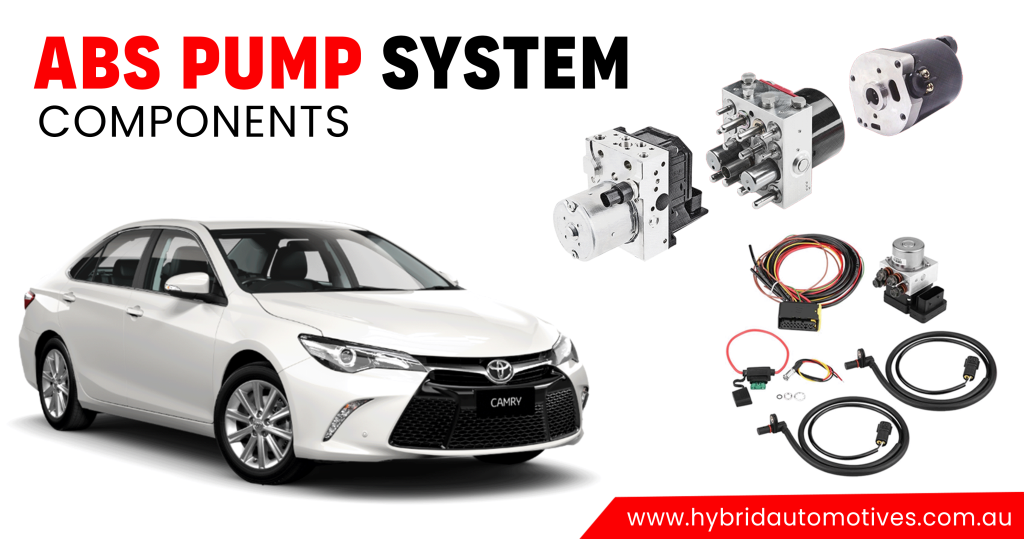
In-car safety, the Anti-lock Braking System (ABS) is really important. It helps keep the car steady and lets you control it better when you brake. Central to the functionality of ABS are sensors, valves, and electronic control units (ECUs) that work together seamlessly within the ABS pump system. Sensors in ABS Pump System The sensors within the ABS pump system are pivotal components that contribute to the system’s functionality and effectiveness in enhancing vehicle safety during braking. Wheel Speed Sensors At the heart of the ABS pump system are wheel speed sensors. These sensors are strategically positioned at each wheel to monitor its rotational speed. As the vehicle moves, the wheel speed sensors continuously send signals to the electronic control unit (ECU), providing real-time data on the speed of each wheel. Role in Preventing Wheel Lock-Up The primary function of wheel speed sensors is to detect any discrepancies in wheel speeds. In the event of rapid deceleration or sudden braking, if one or more wheels begin to lock up or lose traction, the wheel speed sensors immediately detect this change. This is important for the ABS to step in and adjust brake pressure as needed. Real-Time Feedback to the ECU Wheel speed sensors act as the eyes of the ABS, providing vital feedback to the ECU. Based on the data received from the sensors, the ECU evaluates the current state of each wheel and determines whether intervention is necessary to prevent wheel lock-up. Ensuring Optimal Braking Performance By continuously monitoring wheel speeds and providing real-time feedback to the ECU, wheel speed sensors play a critical role in ensuring optimal braking performance. The ABS can adjust brake pressure individually for each wheel, allowing the vehicle to maintain stability and control during braking, even on slippery or uneven surfaces. Valves in ABS Pump System Valves are integral components within the ABS pump system, playing a crucial role in regulating brake fluid flow and modulating brake pressure to prevent wheel lock-up during braking maneuvers. Solenoid Valves The primary type of valve used in ABS pump systems is the solenoid valve. These valves are devices powered by electricity and mechanics. They control how brake fluid moves to each wheel. Solenoid valves are strategically located within the hydraulic unit of the ABS pump system. Modulating Brake Pressure When the ABS system detects impending wheel lock-up, it activates the solenoid valves to modulate brake pressure rapidly. By opening and closing these valves in quick succession, the ABS system can adjust brake pressure on a wheel-by-wheel basis, ensuring optimal braking performance and vehicle stability. Rapid Response Mechanism One of the key advantages of solenoid valves is their ability to respond rapidly to changing driving conditions. In the event of sudden deceleration or loss of traction, the ABS system can activate the solenoid valves within milliseconds, allowing for immediate adjustment of brake pressure to prevent wheel lock-up. Integral to ABS Functionality Valves, particularly solenoid valves, are essential for the effective operation of the ABS pump system. Their ability to modulate brake pressure in real-time based on sensor inputs is crucial for preventing wheel lock-up and maintaining vehicle control during braking maneuvers. Electronic Control Units (ECUs) in ABS Pump System Electronic Control Units (ECUs) play a pivotal role in the functionality and operation of the ABS pump system, serving as the central intelligence behind the system’s ability to prevent wheel lock-up and maintain vehicle stability during braking. The brain of the ABS System ECUs act as the brains of the ABS, orchestrating the interaction between various components such as sensors, valves, and the hydraulic unit. They receive real-time data from wheel speed sensors and other sensors throughout the vehicle, allowing them to monitor wheel speeds and detect any deviations that may indicate impending wheel lock-up. Processing Sensor Inputs Upon receiving sensor inputs, ECUs process this data using sophisticated algorithms to determine the appropriate course of action. They analyze factors such as vehicle speed, road conditions, and driver inputs to calculate the optimal braking strategy for each wheel. Issuing Brake Pressure Commands Based on the analysis of sensor inputs, ECUs issue commands to the solenoid valves within the hydraulic unit to modulate brake pressure accordingly. They can change how much pressure each wheel’s brakes get. This helps the ABS system stop the wheels from locking up and keeps the car steering and staying stable. Real-Time Adjustment One of the key functions of ECUs is their ability to make real-time adjustments to brake pressure based on changing driving conditions. In emergency braking situations or on slippery surfaces, ECUs can rapidly adjust the brake pressure to prevent wheel lock-up and ensure effective braking performance. Integration with Vehicle Systems The ECUs in the ABS pump are usually connected to other car systems like traction control and stability control. This helps them all work together smoothly, making the car more stable and easier to control when braking or turning corners. Integration of Components in ABS Pump System The seamless interaction between sensors, valves, and ECUs is crucial for the effective operation of the ABS pump system. Sensors provide real-time data to the ECU, which then interprets this information and commands the valves to modulate brake pressure accordingly. This integrated approach allows the ABS system to respond rapidly to changing driving conditions and prevent wheel lock-up while maintaining steering control. Importance of Proper Functioning Ensuring the proper functioning of sensors, valves, and ECUs within the ABS pump system is paramount for vehicle safety. Any malfunction or failure in these components can compromise the effectiveness of the ABS system, potentially leading to loss of control during braking and increased risk of accidents. Regular check-ups and fixing problems quickly are important to find and solve any issues. Maintenance and Troubleshooting Common issues with sensors, valves, and ECUs in the ABS pump system include sensor calibration errors, valve blockages, and ECU malfunctions. Figuring out and fixing these problems needs special tools and knowledge. Regular inspection and maintenance by qualified technicians can help prevent ABS failures and ensure
Components and Mechanisms Involved in ABS Pump Operation
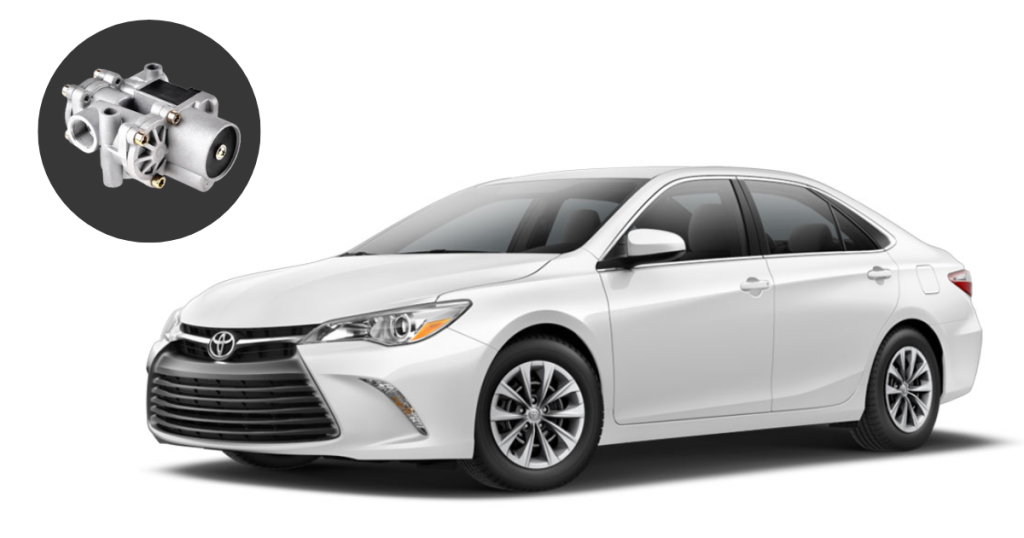
In-car safety, the Anti-lock Braking System (ABS) is crucial for stopping accidents and keeping control when braking suddenly. At the heart of this system lies the ABS pump, which orchestrates a series of intricate processes to maintain traction and stability while braking. Components of an ABS Pump The Anti-lock Braking System (ABS) is really important in today’s cars. It stops the wheels from locking up when you brake hard and helps you steer safely in emergencies. Understanding the components of an ABS pump is essential to grasp how this system functions effectively. Hydraulic Unit At the core of the ABS pump lies the hydraulic unit. This part makes and controls the pressure in the brakes. It consists of a pump, valves, and hydraulic lines that deliver brake fluid to the brakes when needed. The hydraulic unit is really important for adjusting brake pressure to stop the wheels from locking up and to make sure the brakes work well. Electronic Control Unit (ECU) The Electronic Control Unit, known as the ECU, acts as the ABS’s brain. It gets information from different sensors, like the ones that measure wheel speed, and uses it to figure out how to brake properly. The ECU continuously monitors wheel speed and other parameters, issuing commands to modulate brake pressure when necessary. It plays a crucial role in coordinating the operation of the ABS and ensuring optimal performance in diverse driving conditions. Wheel Speed Sensors Wheel speed sensors are integral to the functioning of the ABS pump. These sensors find out how fast each wheel is spinning and send that information to the ECU. By monitoring wheel speed, the ABS system can detect potential wheel lock-up and intervene to prevent it. Wheel speed sensors provide real-time feedback to the ECU, enabling precise control of brake pressure to maintain traction and stability during braking. Valves ABS pumps have valves that use electricity to control the brake fluid going to each wheel. They make sure the brakes don’t lock up and keep the car steering properly. When the ABS detects impending wheel lock-up, it activates the solenoid valves to release or increase brake pressure as needed. Valves play a crucial role in the rapid adjustment of brake pressure, allowing the ABS to respond swiftly to changing driving conditions. Mechanisms of ABS Pump Operation Understanding how an ABS pump operates involves delving into its intricate mechanisms: Normal Braking vs. ABS Braking During regular braking, the brake pedal actuates the hydraulic system, applying pressure to the brakes. But ABS brakes work differently. They keep checking how fast the wheels are spinning and change the brake pressure to stop them from locking up. This dynamic intervention ensures that the vehicle maintains traction and stability, even during sudden braking or slippery road conditions. Sensor Inputs and Feedback A crucial aspect of ABS operation is the input from wheel speed sensors. These sensors feel how fast each wheel is spinning and send that information to the Electronic Control Unit (ECU). The ECU analyzes this information in real-time to detect potential wheel lock-up situations. By continuously monitoring wheel speed, the ABS can respond promptly to changes in driving conditions, ensuring optimal braking performance. Modulation of Brake Pressure When the ABS system detects imminent wheel lock-up, it intervenes by modulating brake pressure. This modulation is achieved through rapid adjustments in the solenoid valves within the hydraulic unit. By opening and closing these valves at precise intervals, the ABS Pump system regulates brake pressure to prevent wheel lock-up while maintaining steering control. This dynamic modulation ensures that the vehicle can stop safely and efficiently, even under challenging driving conditions. Anti-lock Braking Algorithms ABS systems employ sophisticated algorithms to determine the ideal braking strategy for each wheel. These algorithms take into account various factors, including vehicle speed, road conditions, and driver inputs. By continuously analyzing sensor data and adjusting brake pressure accordingly, ABS systems can optimize braking performance while minimizing the risk of wheel lock-up. These anti-lock braking algorithms are essential for ensuring the safety and stability of the vehicle during emergency braking situations. Integration with Vehicle Systems ABS pumps usually team up with other safety systems in the car. ABS with Traction Control: Integrated ABS and traction control systems further enhance vehicle stability by managing wheel slip during acceleration and braking. ABS with Electronic Stability Control: Modern vehicles may feature ABS integrated with Electronic Stability Control (ESC), which helps maintain vehicle stability by selectively applying brakes to individual wheels. Maintenance and Troubleshooting Ensuring the proper functioning of an ABS pump requires periodic maintenance and troubleshooting: Common Issues with ABS Pumps: Problems such as sensor malfunctions, hydraulic leaks, or ECU failures may impair ABS performance. Diagnostic Tools and Techniques: Mechanics use specialized diagnostic tools to identify ABS-related issues, including OBD scanners and ABS code readers. Repair and Replacement Considerations: Depending on the nature of the problem, repairs may involve sensor recalibration, hydraulic system flushing, or outright replacement of components. Future Trends in ABS Technology As automotive technology continues to evolve, ABS systems are poised to undergo significant advancements: Advancements in Sensor Technology: Innovations in sensor technology, such as the integration of LiDAR or radar sensors, promise to enhance the accuracy and responsiveness of ABS systems. Integration with Autonomous Systems: ABS systems will likely play a crucial role in the development of autonomous vehicles, contributing to their ability to navigate safely in various road conditions. Enhanced Safety Features: Future ABS iterations may incorporate additional safety features, such as predictive braking algorithms or collision avoidance systems.
Toyota Hybrid Battery Life: Everything You Need to Know
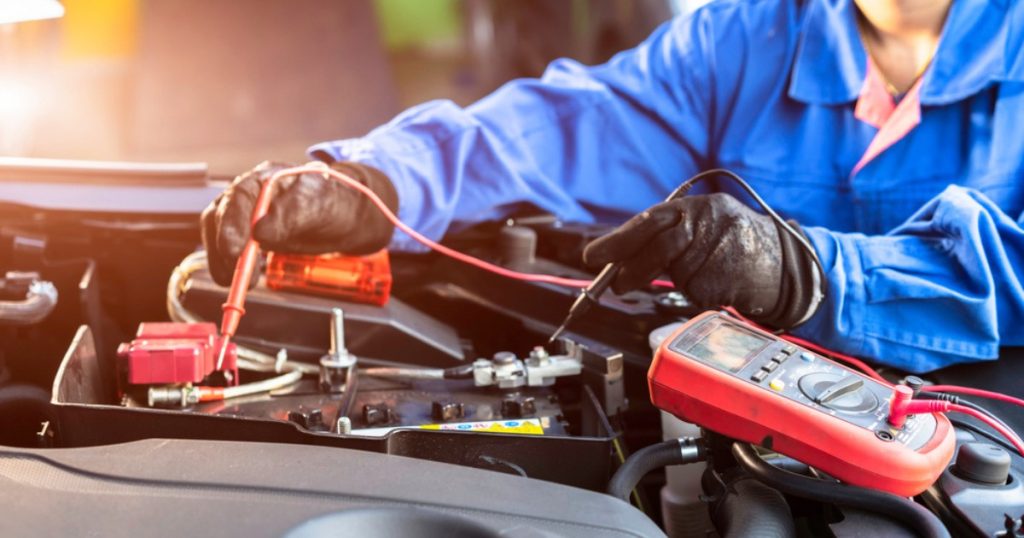
Hybrid cars are becoming more popular because they use less fuel and are better for the environment. However, one aspect that concerns potential buyers is the lifespan of Toyota hybrid batteries, particularly in Toyota vehicles. Toyota hybrid batteries are made to work for a long time, usually around 150,000 miles or 10 years before they need replacing. This is according to Toyota and applies to vehicles under normal driving conditions. There are even reports of some Toyota hybrid batteries lasting up to 200,000 miles or more! Toyota extended its warranty on hybrid batteries to reflect this extended lifespan. The current warranty covers 10 years or 150,000 miles. Understanding Hybrid Battery Basics Hybrid batteries, also called traction batteries, are vital in powering hybrid vehicles. Let’s see how they operate and why they’re important in hybrid cars. What is a hybrid battery? A hybrid battery, also called a traction battery, is like a rechargeable battery used in hybrid cars to store energy. It provides the necessary power to supplement the internal combustion engine and drive electric motors. How does it work? Toyota hybrid batteries typically consist of nickel-metal hydride (NiMH) or lithium-ion (Li-ion) cells arranged in modules. These batteries store energy generated during braking and deceleration, which is then used to power the electric motor during acceleration or when driving at low speeds. Factors Influencing Toyota Hybrid Battery Life The lifespan of Toyota hybrid batteries can vary depending on several factors: Driving Habits: Driving aggressively, like speeding up quickly and braking hard, can make the battery wear out faster and not last as long. Environmental Conditions: Very hot or very cold weather can make the battery work worse and not last as long. When it’s hot, the battery can get too hot and wear out faster. When it’s cold, the battery doesn’t work as well. Maintenance Practices: Regular maintenance, including battery inspections and software updates, is essential for preserving battery health and maximizing lifespan. If you don’t take care of the battery, it might stop working sooner than expected. Charging and Discharging Patterns: Hybrid batteries perform best when regularly charged and discharged within a certain range. Leaving the battery almost empty for a long time or charging it too much can make it wear out faster and not last as long. Age and Mileage: As hybrid vehicles age and accumulate mileage, the performance of the battery may gradually decline. However, proper maintenance and care can help mitigate the effects of aging on battery life. Signs of Toyota Hybrid Battery Degradation As hybrid batteries age, they may exhibit certain signs of degradation: Decreased fuel efficiency: If you notice your car using more fuel than before, it might mean the battery isn’t working as well as it should. Warning lights: If you see warning lights on your car’s dashboard, like the ones for the hybrid system or battery, it could mean there’s a problem. Poor performance: The vehicle may experience sluggish acceleration or difficulty maintaining electric mode operation. Maximizing Toyota Hybrid Battery Lifespan To make Toyota hybrid batteries last longer, try these tips: Regular maintenance: Schedule routine maintenance appointments to inspect the battery and ensure it’s functioning optimally. Eco-friendly driving habits: Practice gentle acceleration, and smooth braking, and avoid unnecessary idling to reduce stress on the battery. Proper storage techniques: If storing the vehicle for an extended period, keep it in a cool, dry environment and maintain a partial state of charge. Common Myths About Toyota Hybrid Battery Life Here are some common Myths About Toyota Hybrid Battery Life: Myth: Hybrid Batteries Need Replacement Regularly Despite what many people think, hybrid batteries are made to work for as long as the car does, under regular driving conditions. Most Toyota hybrid vehicles come with warranties covering the battery for several years, assuring longevity. Myth: Hybrid Batteries Always Lose Capacity Over Time While it’s true that hybrid batteries may experience some capacity loss over time, proper maintenance and care can help minimize degradation. With regular maintenance and eco-friendly driving habits, a hybrid battery lifespan can be extended, ensuring continued performance and efficiency. Myth: Aftermarket Replacement Batteries Are the Best Option While aftermarket replacement batteries may offer cost savings initially, they may not always meet the same quality and reliability standards as genuine OEM batteries. Opting for genuine Toyota replacement batteries ensures compatibility and reliability, maintaining the vehicle’s integrity and performance. Myth: All Hybrid Batteries Are the Same Hybrid batteries come in various types and configurations, including nickel-metal hydride (NiMH) and lithium-ion (Li-ion) chemistries. Each type of battery has its features and abilities, and they can’t all be swapped out for each other. It’s important to talk to a skilled technician to find the right battery for your Toyota hybrid car.
